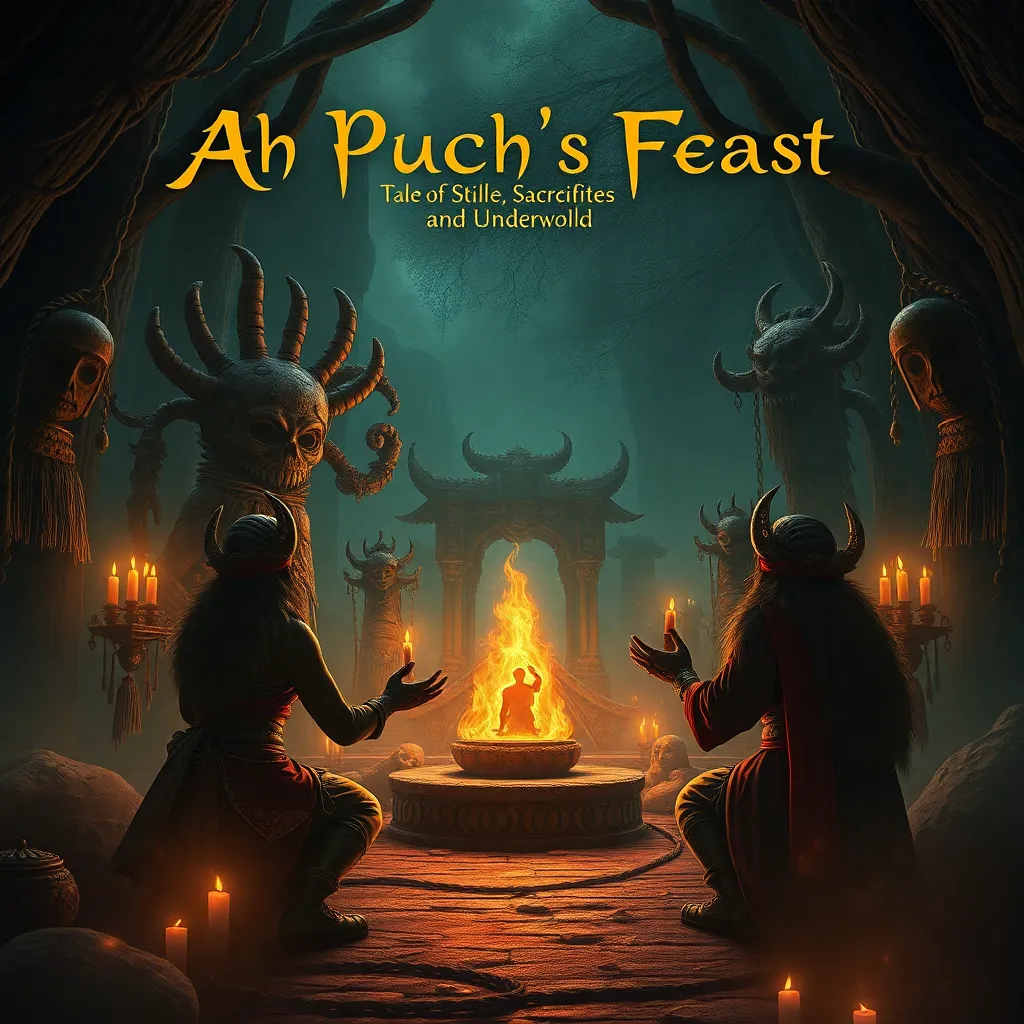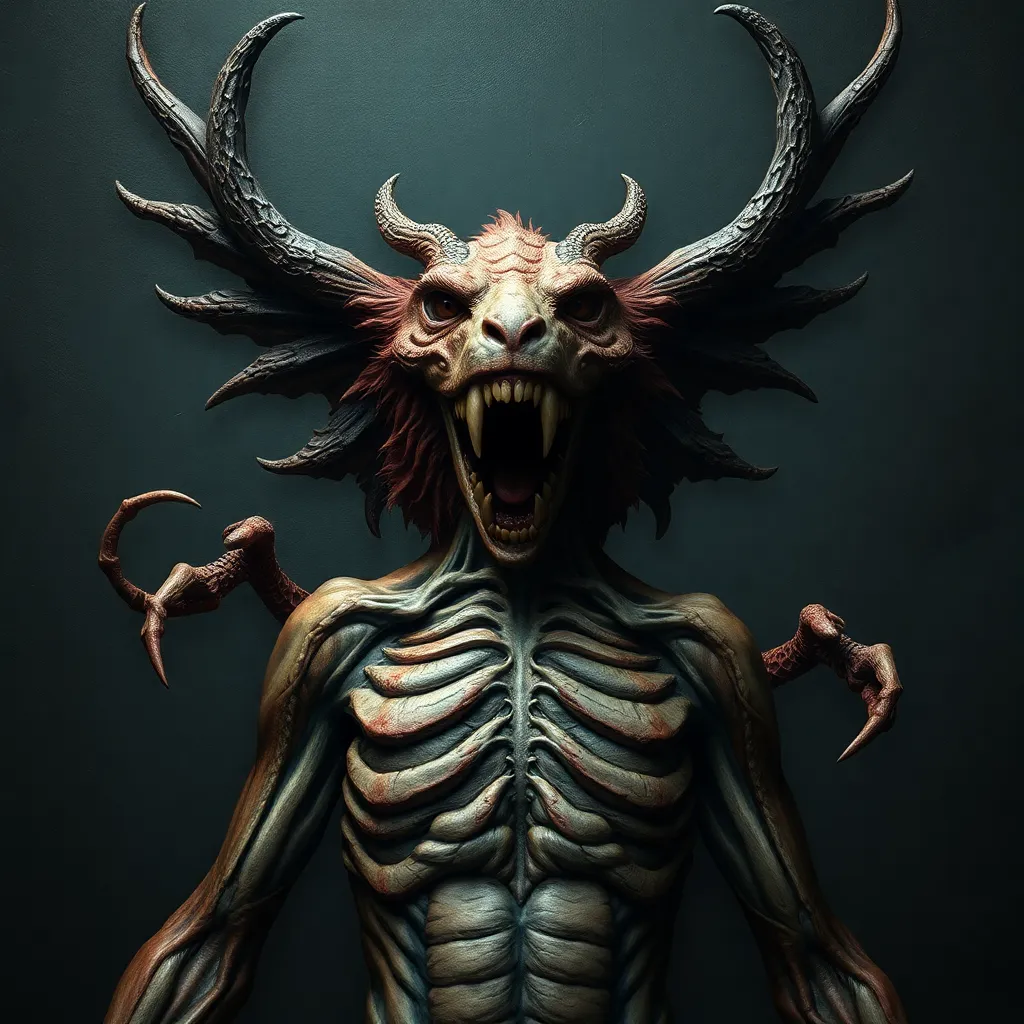Ah Puch’s Feast: Tales of Sacrifice and the Underworld
I. Introduction
In Mesoamerican mythology, Ah Puch stands as a formidable figure, embodying death and the underworld. His presence is felt across various cultures, particularly among the Maya and Aztec civilizations, where the underworld was not merely a place of darkness and despair but a realm of transformation and renewal. The importance of the underworld in ancient cultures reflects their beliefs about life, death, and the cyclical nature of existence. This article aims to explore the tales of sacrifice related to Ah Puch, delving into the rituals and beliefs that surround this enigmatic deity.
II. Who is Ah Puch?
Ah Puch, often depicted as a skeletal figure adorned with bells and carrying a war club, serves as the god of death and the ruler of the underworld in Mesoamerican mythology. His historical and cultural significance is profound, as he embodies the fears and reverence that ancient peoples held for death and the afterlife.
As the god of death, Ah Puch played a crucial role in the cosmology of Mesoamerican civilizations. He was believed to preside over the souls of the deceased, guiding them through the trials of the underworld, known as Xibalba, a place where the dead faced challenges and tests before reaching their final resting places.
Symbolically, Ah Puch represents not only the end of life but also the necessary cycle of death and rebirth. He is often associated with the themes of decay and renewal, reminding the living of the transient nature of existence.
III. The Concept of Sacrifice in Mesoamerican Beliefs
In ancient Mesoamerican cultures, sacrifice was a fundamental practice that served multiple purposes, from appeasing deities to ensuring agricultural fertility. The significance of blood offerings to gods cannot be overstated, as they were seen as essential for maintaining cosmic balance and harmony.
- Religious Significance: Sacrifices were believed to nourish the gods and ensure their favor.
- Agricultural Cycles: Rituals often coincided with planting and harvest seasons, linking human sacrifice to the fertility of the earth.
- Cultural Identity: The practice of sacrifice helped to forge a collective identity among communities, reinforcing social hierarchies and religious beliefs.
IV. Ah Puch’s Feast: Rituals and Ceremonies
The Feast of Ah Puch was a significant event in the Mesoamerican calendar, dedicated to honoring the god of death. This feast was marked by elaborate rituals and ceremonies aimed at appeasing Ah Puch and ensuring a favorable afterlife for the deceased.
During the feast, various types of sacrifices were conducted, including:
- Animal Sacrifices: Animals such as deer and birds were often offered to Ah Puch.
- Human Sacrifices: In some instances, captives from wars were sacrificed, believed to be a way to honor the gods and provide them with sustenance.
- Food Offerings: In addition to blood sacrifices, offerings of food and drink were made to ensure the gods’ continued support.
Priests played a vital role in these rituals, acting as intermediaries between the gods and the people. Participants would engage in ceremonial dances, prayers, and the recitation of sacred texts, all aimed at invoking the presence of Ah Puch during the feast.
V. Tales of Sacrifice: Legends and Myths
Throughout Mesoamerican history, numerous myths and legends have emerged surrounding Ah Puch and his feasts. These narratives often highlight the themes of sacrifice, bravery, and the consequences of one’s actions. Some of the key myths include:
- The Tale of the Brave Warrior: A young warrior sacrifices himself in battle, believing that his death will earn him a place in Ah Puch’s realm and ensure protection for his family.
- The Offering of the Captive: A story where a captured enemy willingly offers himself to Ah Puch, seeking to gain favor and strength for his people.
- The Cycle of Life and Death: Myths that narrate the cyclical nature of existence, emphasizing how sacrifices lead to rebirth and regeneration.
These stories convey moral and cultural lessons, teaching the importance of sacrifice, bravery, and the interconnectedness of life and death in Mesoamerican beliefs.
VI. The Underworld in Mesoamerican Cosmology
The underworld, or Xibalba, is a richly detailed aspect of Mesoamerican cosmology, envisioned as a complex realm filled with trials and challenges. Ah Puch’s domain is often depicted as a dark, cold place where souls must navigate obstacles to reach their final resting place.
Ah Puch’s realm is significant in shaping beliefs about the afterlife. Souls would encounter various deities and challenges that tested their worthiness. The significance of this underworld parallels other mythological underworlds, such as:
- Hades in Greek Mythology: A place where souls are judged and sent to different realms based on their earthly lives.
- Hel in Norse Mythology: A realm for those who did not die in battle, ruled by the goddess Hel.
- Yomi in Japanese Mythology: A shadowy realm where the dead reside, emphasizing the importance of rituals in honoring ancestors.
VII. Modern Interpretations and Cultural Legacy
Ah Puch and the tales of sacrifice continue to influence contemporary culture, resonating in various forms of art, literature, and media. Modern interpretations often blend ancient narratives with contemporary themes, reflecting ongoing fascinations with death, sacrifice, and the afterlife.
Celebrations such as the Day of the Dead in Mexico draw inspiration from ancient practices, honoring deceased loved ones while incorporating elements of pre-Hispanic beliefs. These adaptations highlight the enduring nature of sacrifice and remembrance within modern contexts.
The impact of these stories on art and literature is immense, inspiring countless works that explore themes of mortality, spirituality, and cultural identity. From graphic novels to films, Ah Puch’s narrative serves as a powerful reminder of the complexities surrounding life and death.
VIII. Conclusion
In conclusion, Ah Puch holds a significant place in Mesoamerican mythology, symbolizing the intricate relationship between life, death, and sacrifice. The exploration of his tales and the rituals surrounding his feast reveal much about ancient beliefs and the human condition. As we reflect on the enduring nature of sacrifice throughout history, it becomes clear that these narratives are not merely relics of the past but continue to resonate in our contemporary lives. Understanding these ancient stories enriches our appreciation for the complexities of human experience and the cultural legacies that shape our world today.



